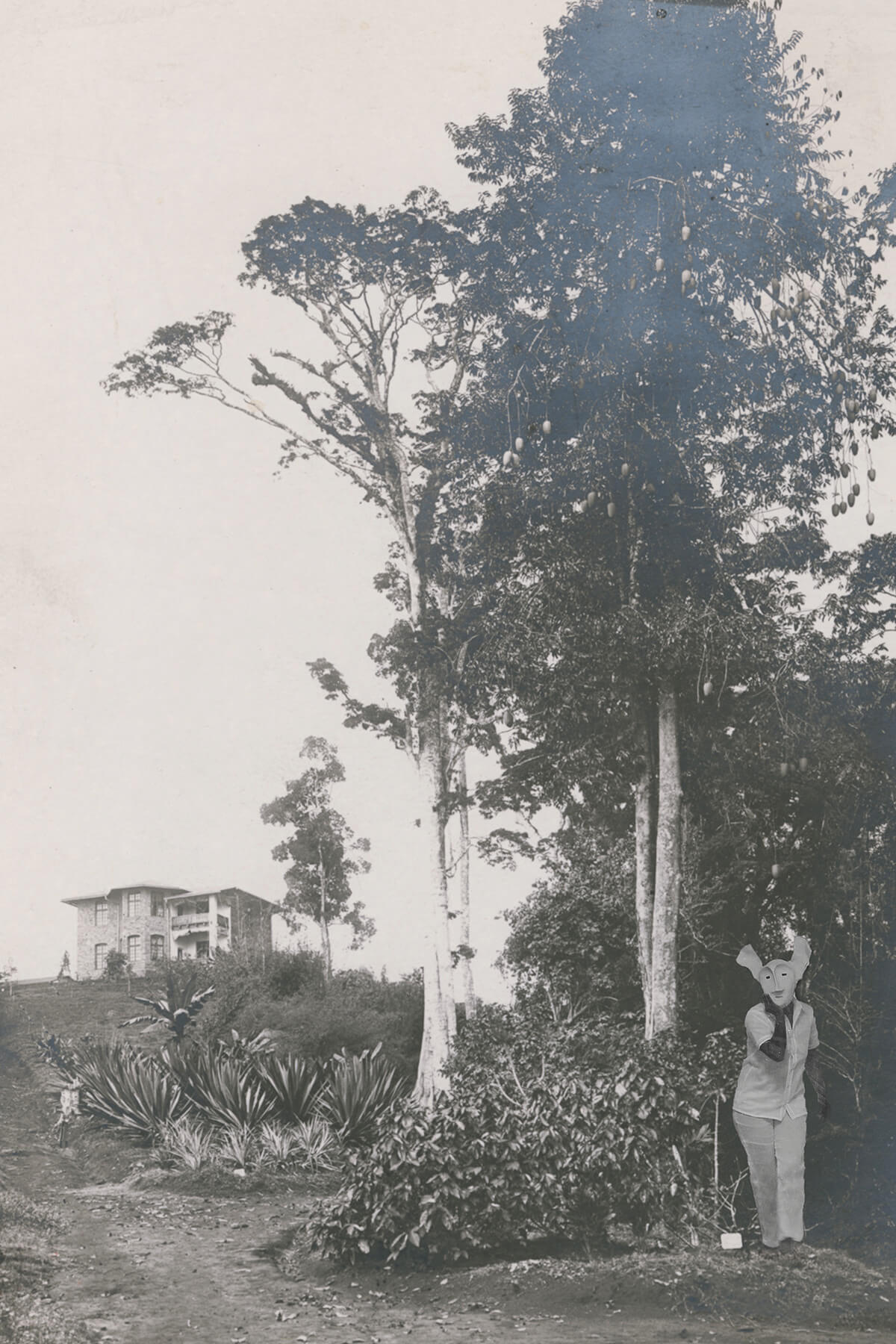Concept:
Kaspale find themselves inside of photographs produced by zoologists, Julius Vossler and Dr. Franz Ludwig Stuhlmann in the early late 1800 and early 1900 during their time in Tanzania, which are now part of the museum archive. Kaspale disturbs these images, disrupting the urge for the audience to be nostalgic over this period.
About:
Kyambi created a series of ten postcards, which were adapted and used for the audience of the exhibition AMANI. Auf den Spuren einer Kolonialen Forschungsstation/ AMANI, on the Trail of the Spectre of a Colonial Research Station at the MARKK Museum in Hamburg. The audience was prompted to write their thoughts and questions and their reflections on their colonial past. The questions included, do you know of any traces of colonial entanglement in your life, your family, your relations, your neighbourhood, and your city? Do you collect, keep or use any objects, photographs, or material that relate to the connection between the colonial past and present? Kaspale disturbs these archives, disrupting the pleasure experienced when the urge for the audience feels pleasure from their nostalgia over this period. Kaspale also becomes a tool for people to add their narratives to be prompted into self-reflection. The photograph features Kaspale, a character that Syowia Kyambi devised to intervene in spaces charged with colonial histories/activities.
The name Kaspale originates from a mix of both German and Kiswahili language, creating a multitude. Kasper is a word from the German language, and pale is influenced by sheng. Sheng is a powerful fluid language that has new words made up on a daily basis. ‘Pale’ in Kiswahili means over there. It is a very specific there. A there that is nearby, visible, just around, at close proximity. The pale in Kaspale is no longer pale in Kiswahili but sheng between English and Kiswahili. For Syowia, the process of naming Kaspale (German, Kiswahili, and the Sheng effect on the Kiswahili translation) is her own sheng, a mix of her German and Kenyan heritage; coherent and incoherent. The power in this mix is what she embraces using creolization, as a result, the multitude becomes unbeatable, unbreakable, surviving due to an ability to morph, to adapt to be fluid, moving soft yet hard, as needed. The Kaspale’s are playful tricksters who engage in social and satire. They have the task and ability to call out authority when needed. They speak up when others can’t.

















